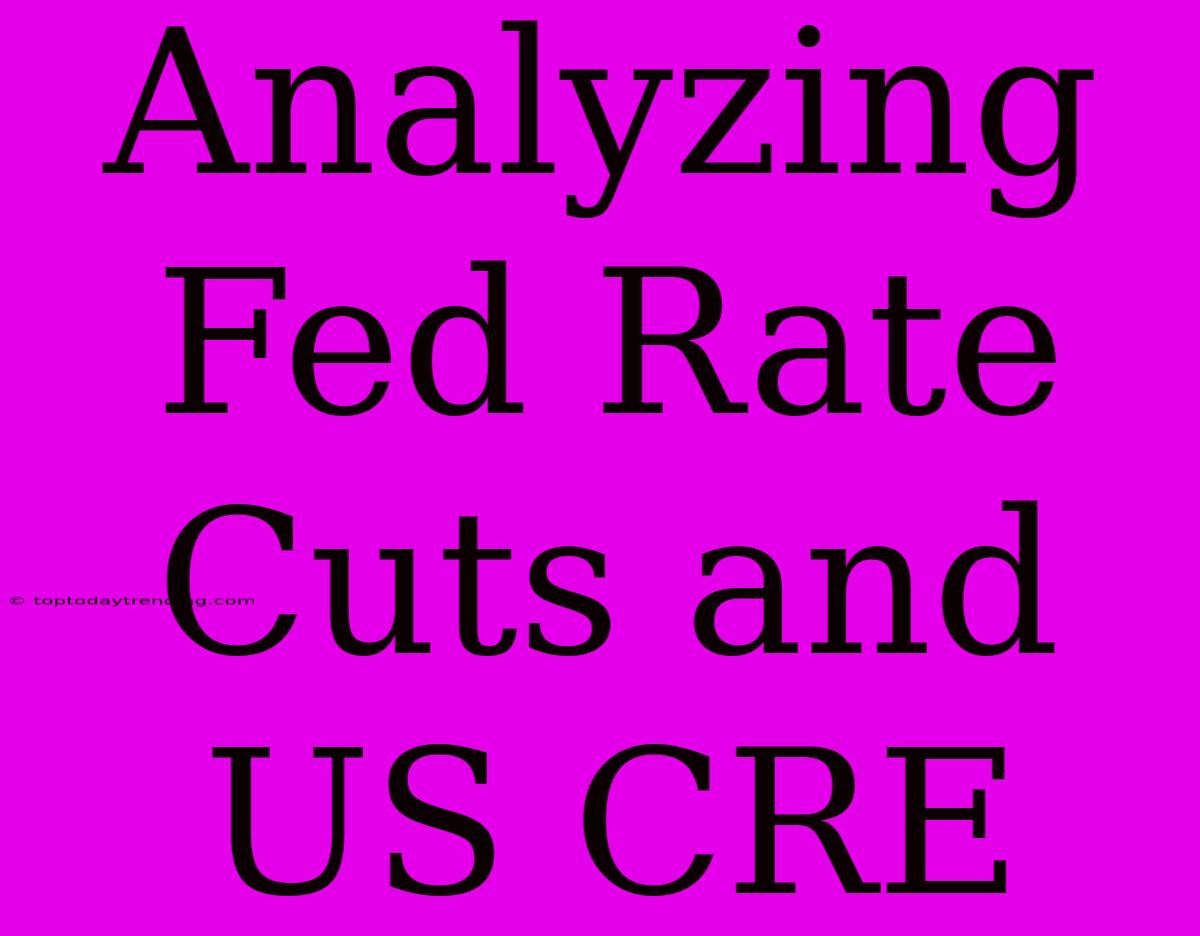Analyzing Fed Rate Cuts and US CRE: A Look at the Complex Relationship
The Federal Reserve (Fed) rate cuts are a significant economic tool that can have a profound impact on the commercial real estate (CRE) industry. Understanding this intricate relationship is crucial for investors, developers, and anyone involved in the US CRE market.
Fed Rate Cuts: A Primer
The Fed sets interest rates, known as the federal funds rate, to influence the cost of borrowing for banks and ultimately, the entire economy. Lower rates make borrowing more affordable, encouraging businesses to invest and consumers to spend.
How do Fed Rate Cuts Affect CRE?
1. Increased Borrowing Activity: Lower rates make financing more attractive, allowing developers to secure loans at lower costs and potentially expand their projects.
2. Stimulated Demand: When businesses have access to cheaper capital, they tend to invest more in real estate, driving up demand for CRE assets.
3. Lower Cap Rates: Cap rates, which measure an investment's annual return, typically decrease when interest rates fall. This makes properties more attractive to investors seeking higher yields in a low-rate environment.
4. Potential for Inflation: While lower rates stimulate the economy, they can also lead to inflation. This can erode the value of existing CRE investments and make it more expensive to build new properties.
CRE Performance: A Historical Perspective
Historical data reveals a complex relationship between Fed rate cuts and US CRE performance.
The 2008 Recession: In the aftermath of the 2008 financial crisis, the Fed slashed interest rates to near zero. While this stimulated some economic activity, it also led to a real estate bubble and eventually, a major downturn in the CRE market.
Recent Years: More recent Fed rate cuts, like those in 2019 and 2020, have had a positive impact on CRE. Low rates have supported strong demand for office, industrial, and multifamily properties.
The Current Landscape: A Balancing Act
The current environment is characterized by high inflation and a volatile economic outlook. While the Fed has raised rates several times in recent months to combat inflation, it may need to balance these efforts with the need to stimulate economic growth.
Challenges and Opportunities:
- Inflation: Rising inflation can significantly increase construction costs and impact the profitability of CRE projects.
- Supply Chain Issues: Disruptions in the supply chain can delay construction and drive up costs.
- Rising Interest Rates: While not as low as during the recent period, interest rates are still historically low. This presents opportunities for investors seeking value-add projects and new development.
Conclusion:
Analyzing the relationship between Fed rate cuts and US CRE requires a nuanced approach. While lower rates can stimulate economic activity and boost demand for commercial real estate, they can also contribute to inflation and potential market instability.
Investors and developers need to carefully assess the current economic conditions, market fundamentals, and the potential impact of Fed policy on their specific projects. By understanding the complex interplay of these factors, they can make informed decisions and navigate the dynamic US CRE landscape effectively.

